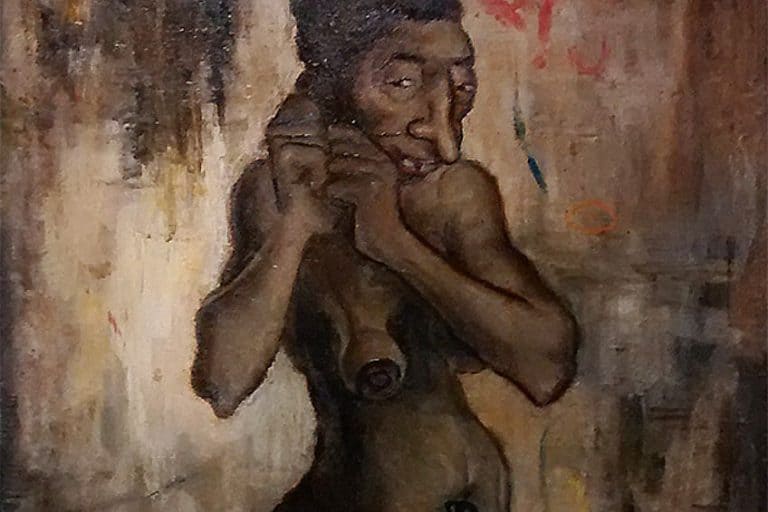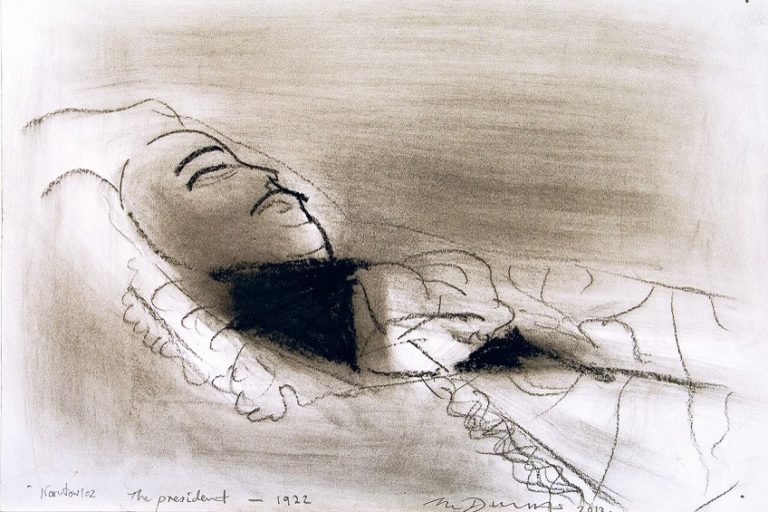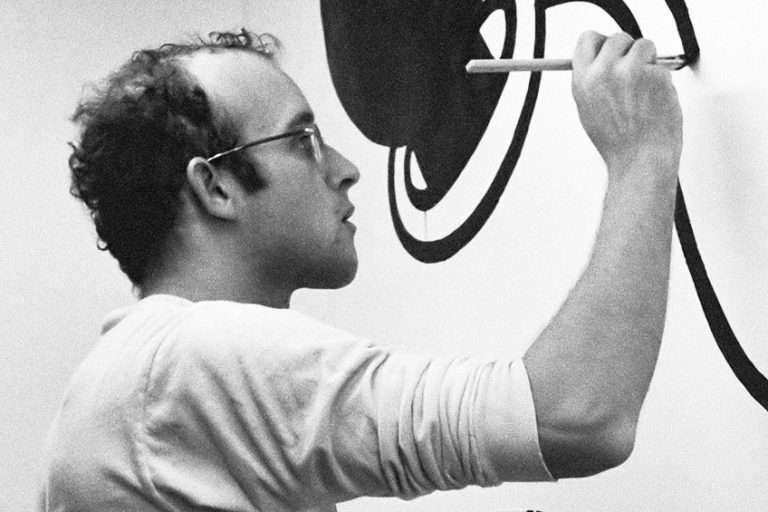Paula Scher – Discover This Iconic Graphic Designer
As one of the world’s most renowned graphic designers, Paula Scher’s work is instantly recognizable. Her iconic style is something we all see on a daily basis, whether we’re walking down the street, perusing the aisles of a grocery store, or surfing the web. You can see Paula Scher’s designs if you go to the Museum of Modern Art in New York City, walk into a Citibank location, utilize Windows 8, or pass by any Tiffany & Co.
Artist in Context: Who Is Paula Scher?
| Date of Birth | 6 October 1948 |
| Country of Birth | Washington D.C., United States |
| Art Movements | Russian Constructivism and Postmodern design |
| Mediums Used | Graphic design and painting |
Paula Scher is a graphic designer, illustrator, painter, and teacher from the United States. She is best known for her iconic designs, which include the Citibank logo and the Public Theater in New York City. Scher has received numerous awards for her contributions to graphic design and is widely regarded as one of her generation’s most influential designers.

Childhood and Education
Paula Scher, one of the most well-known graphic designers of her generation, was born in Washington, D.C. on October 6, 1948. She grew up in a family that appreciated quality education and intellectual endeavors. During her early childhood, she and her family moved around a lot. They lived in Arlington, Virginia, then Fairfax County, Virginia, and then Silver Spring, Maryland, where she went to elementary and high school. Scher explains that she had a hard childhood as she often felt uprooted and missed a sense of belonging, even in her own family.
As a rather lonely child, Scher began drawing as a form of therapy and an outlet for her creativity.
Drawing became an escape from reality and her parents fostered her creative endeavors. Scher started to attend art classes at the Corcoran College of Art + Design on the weekends during high school and she often designed posters for her school’s dances and events. But it wasn’t until she enrolled at Tyler School of Art in 1966 that she discovered her creative voice and a place where she felt at ease. Scher graduated with a BFA from the Tyler School of Art at Temple University in Philadelphia in 1970. During her time at Tyler, Scher honed her artistic skills, experimenting with a wide range of media and techniques.
Early career
One of the professors at the Tyler School of Art, Stanislaw Zagorski, became an important mentor for Scher. Zagorski urged Scher to move to New York City after having graduated, and Scher took his advice, moving to the Big Apple with her design portfolio and only $50 in her name. Zagorski sent Scher to meet Harris Lewine, who, at the time, was the art director for Random House. Lewine would later introduce Scher to Seymour Chwast, who would become her most important mentor and whom she would marry in 1973.

Scher began her career as a layout artist for children’s books at Random House before moving on to work full-time for CBS Records in 1972, designing album covers. She was successful at CBS Records, designing some of the most notable album covers of the 1970s and 1980s. She created covers for legendary musicians such as Bob Dylan, Bruce Springsteen, and Billy Joel, and her work became an integral part of their visual identities. Scher left CBS after two years to work for a rival label, Atlantic Records. In 1982, Scher left Atlantic Records to pursue her own projects.
In 1984, Scher joined Pentagram, a leading design firm that provides services in architecture, branding, graphic design, and more. She became a partner at the firm in 1991, and her career continued to flourish. At Pentagram, Scher worked on a wide range of projects, from branding and identity design to environmental design and packaging.
During this period, Scher set herself apart from other designers through her eclectic approach to typography.
One of her most influential early projects with Peragram was for the Public Theater in New York City in 1994. In this design, Scher merged different styles to embrace the new identity of the theater that was focused on diversity, community engagement, and creativity. Scher’s rebranding for the theater featured bold, colorful letters arranged in an irregular pattern. The rebrand was instantly popular and it quickly became the iconic symbol of the theater.
Throughout her early career, Scher continued to challenge the boundaries of design, experimenting with new techniques and approaches. She combined typography with photography and other visual elements to create designs that were both visually striking and conceptually sophisticated. She collaborated on architectural projects, using her unique style to create dynamic design spaces in urban landscapes.
Mature Career
As Paula Scher’s career progressed, she continued to work on groundbreaking projects that redefined the field of graphic design. During her mature career at Pentagram, Scher worked on some of her most iconic design projects. Some of these projects included the redesign campaigns for major corporations, including Microsoft, Citibank, Shake Shack, and Tiffany & Co. She also worked with some of the most famous American cultural institutions to establish their brand identities, including the Museum of Modern Art and the High Line in New York City.
Paula Scher’s work at Pentagram is known for its confident use of color, bold typography, and expressive graphics. She quickly became famous for her ability to distill complex ideas into simple, powerful visual forms that resonate with people across different classes and sectors. Scher’s design style also often incorporates irony, humor, and social commentary, which reflects her understanding and engagement with the world around her.
In addition to her commercial design work, Scher has also produced illustration work and paintings. Her oeuvre includes numerous paintings, drawings, and prints that explore themes of identity, community, memory, and communication. Her art is often characterized by its use of text and typography, which she combines with bold, colorful imagery to create works that are both visually striking and intellectually stimulating. Throughout her mature career, Paula Scher has continued to push the boundaries of design, exploring new techniques and approaches while remaining true to her bold, expressive style.
Her contributions to the field of graphic design have had a profound impact on the way we communicate and interact with the world around us, and her legacy continues to inspire and influence designers today.
Most Important Work
As one of the most influential graphic designers of our era, you are bound to recognize many of Paula Scher’s designs. Below, we list some of Paula Scher’s most important works.

The Public Theater (1994)
The Public Theater in New York City’s visual identity was created by Scher in 1994. The theatre required a new brand to better represent its dedication to originality, diversity, and involvement in the local community. Bold, vibrant letters were organized in an asymmetrical manner in Scher’s design.
This produced a dynamic and visually arresting brand that immediately became a well-recognized representation of the theatre.
Citibank (1998)
Scher was given the job of developing a new visual identity for Citibank, one of the biggest banks in the world, in 1998. The “Citi” logo was a large, stylized “Citi” in red and blue that Scher incorporated into a system of graphic elements that could be applied to many different purposes. Paula Scher’s artwork helped to revitalize the Citibank brand and establish it as a leading financial institution.
The High Line (2002)
In 2002, Scher was commissioned to design the visual identity for The High Line, a public park in New York City created on an abandoned elevated railway. Paula Scher’s artwork for the logo includes the park’s name as well as graphic motifs influenced by the railway’s industrial background.
The identity contributed to The High Line’s reputation as a beloved public park and a symbol of urban rebirth.
The Museum of Modern Art (2009)
Scher created the visual identity for New York City’s Museum of Modern Art (MoMA) in 2009. Scher’s design incorporated the museum’s initials and was influenced by the typography of the museum’s building. The new brand received widespread praise for its elegance and simplicity.
Shake Shack (2017)
Scher was commissioned in 2017 to create the visual identity for Shake Shack, a fast-casual food company that had become a global phenomenon. Scher’s design included a large, hand-drawn logo that included the chain’s name as well as a humorous, dynamic graphic language that conveyed the brand’s youthful energy and irreverent personality.
The new branding contributed to Shake Shack’s status as a treasured cultural icon as well as a symbol of the rising fast-casual dining trend.
Reading Recommendation
With her bold and avant-garde style, any publication on the work of Paula Scher is bound to be a delight to the eyes! Whether you are an aspiring or professional designer, or simply someone who appreciates cutting-edge design, we are sure you will love this book!

Paula Scher: Twenty-Five Years at the Public, A Love Story (2020) by Paula Scher
Paula Scher is a legendary personality in the design world with an impressive client list. This book, described as a unique “autobiography of graphic design” offers a behind-the-scenes look at the interaction between Scher and “the Public”. The publication maps the evolution of Scher’s design ethos over more than 20 years.

- A behind-the-scenes account of her work with the Public
- Explore how she navigated two decades of shifting styles
- Take a closer look at her unique design identity
Paula Scher has had a significant impact on graphic design, both through her revolutionary designs and her influence on other designers. Her work has contributed to a reconsideration of the role of graphic design in society, inspiring countless designers to experiment with new techniques and ideas.
Frequently Asked Questions
What Is Paula Scher Best Known For?
Paula Scher is best recognized for her distinctive visual identities and designs for large organizations and cultural institutions such as Citibank, the Museum of Modern Art, the High Line, and Shake Shack. She is also noted for her use of typography and visual elements in her designs that are bold and expressive.
Which Awards Has Paula Scher Won?
Paula Scher’s work has received numerous accolades and awards over the course of her career. She has received awards from organizations including the Art Directors Club, Cooper Hewitt National Design Museum, and the American Institute of Graphic Arts. She has also been inducted into the Art Directors Club Hall of Fame in 1998 and two years later, she received the Chrysler Award for Innovation in Design.
Chrisél Attewell (b. 1994) is a multidisciplinary artist from South Africa. Her work is research-driven and experimental. Inspired by current socio-ecological concerns, Attewell’s work explores the nuances in people’s connection to the Earth, to other species, and to each other. She works with various mediums, including installation, sculpture, photography, and painting, and prefers natural materials, such as hemp canvas, oil paint, glass, clay, and stone.
She received her BAFA (Fine Arts, Cum Laude) from the University of Pretoria in 2016 and is currently pursuing her MA in Visual Arts at the University of Johannesburg. Her work has been represented locally and internationally in numerous exhibitions, residencies, and art fairs. Attewell was selected as a Sasol New Signatures finalist (2016, 2017) and a Top 100 finalist for the ABSA L’Atelier (2018). Attewell was selected as a 2018 recipient of the Young Female Residency Award, founded by Benon Lutaaya.
Her work was showcased at the 2019 and 2022 Contemporary Istanbul with Berman Contemporary and her latest solo exhibition, titled Sociogenesis: Resilience under Fire, curated by Els van Mourik, was exhibited in 2020 at Berman Contemporary in Johannesburg. Attewell also exhibited at the main section of the 2022 Investec Cape Town Art Fair.
Learn more about Chrisél Attwell and the Art in Context Team.
Cite this Article
Chrisél, Attewell, “Paula Scher – Discover This Iconic Graphic Designer.” Art in Context. November 2, 2023. URL: https://artincontext.org/paula-scher/
Attewell, C. (2023, 2 November). Paula Scher – Discover This Iconic Graphic Designer. Art in Context. https://artincontext.org/paula-scher/
Attewell, Chrisél. “Paula Scher – Discover This Iconic Graphic Designer.” Art in Context, November 2, 2023. https://artincontext.org/paula-scher/.












